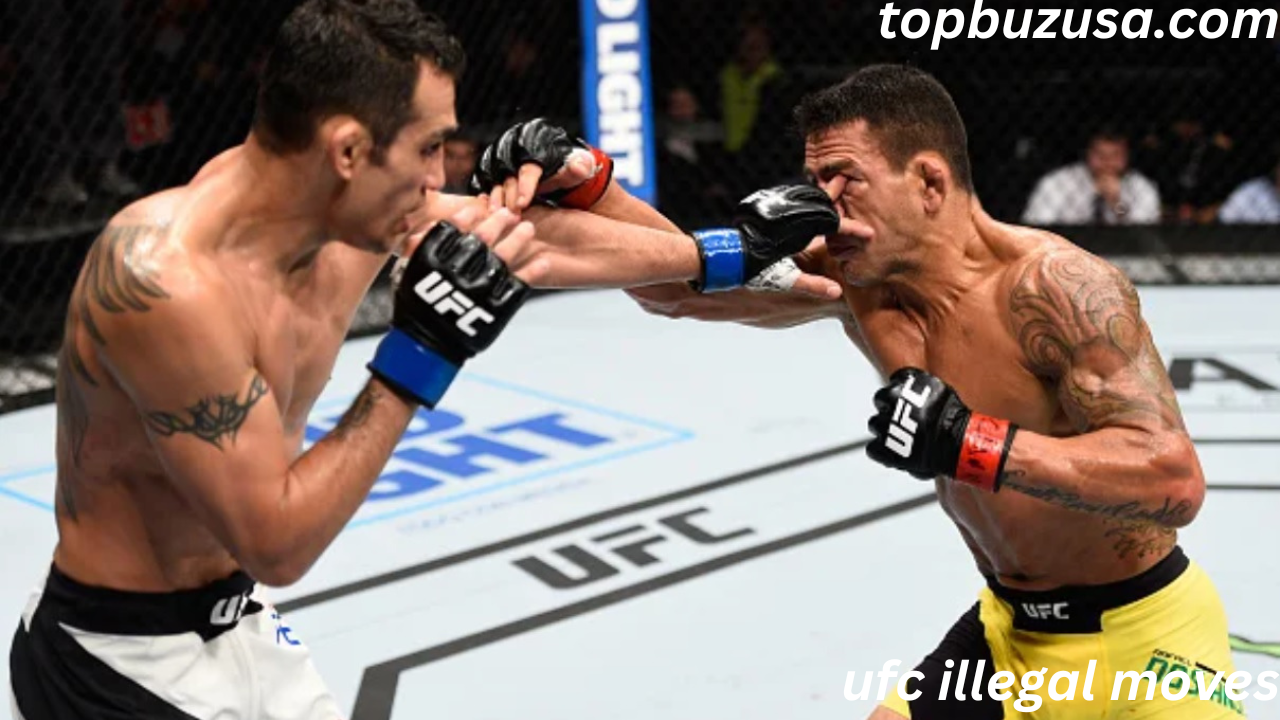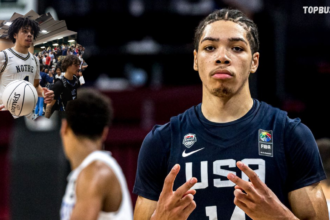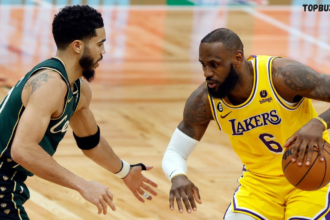The Ultimate Fighting Championship ufc illegal moves is one of the most popular and influential mixed martial arts (MMA) organizations in the world. Known for its intense action, elite athletes, and global reach, the UFC draws millions of viewers to its events. ufc illegal moves, behind the brutal power and raw athleticism lies a strict set of rules designed to ensure fighter safety and maintain the sport’s integrity. While MMA is often associated with its wide range of fighting techniques, not everything goes inside the Octagon.
Illegal moves in the ufc illegal moves outlined under the Unified Rules of MMA, a framework developed to balance competitive fairness with the well-being of fighters. Despite this, illegal moves still occasionally occur, either by accident or intention, and ufc illegal moves affect the outcome of a bout. Understanding which techniques are banned — and why — is crucial for fans, fighters, and even aspiring martial artists.
This article offers a comprehensive breakdown of illegal moves in the UFC, exploring their origins, classifications, consequences, and controversial ufc illegal moves. Whether you’re a casual viewer or a hardcore fan, knowing what’s off-limits can enhance your appreciation for the sport and deepen your understanding of the rules that govern it.
The Philosophy Behind UFC Rules
Origins of the Unified Rules of MMA
The UFC didn’t always have the detailed regulations it follows today. When it launched in 1993, the promotion marketed itself with the tagline “There are no rules,” which wasn’t entirely true — but close. In its early days, the UFC permitted headbutts, groin strikes, hair pulling, and even fish hooking. Fighters from different disciplines were thrown into a no-holds-barred competition, leading to unpredictable and often dangerous results.
As MMA grew in popularity, pressure from athletic commissions, lawmakers, and the general public pushed the sport to evolve. The need to standardize and legitimize MMA led to the creation of the Unified Rules of Mixed Martial Arts in 2000. First adopted by the New Jersey State Athletic Control Board and later embraced by Nevada and other commissions, these rules set clear boundaries for acceptable techniques and fouls.
Why Some Moves Are Banned

The main reasons for banning specific moves in the UFC are fighter safety and sportsmanship. MMA is already an intense, high-risk sport. Without some limits, injuries could become catastrophic and far more frequent. Banned techniques are typically those that can cause irreversible damage, such as strikes to the spine or eyes, or those that offer no fair opportunity for defense, like small joint manipulation.
Additionally, the image of the sport matters. The UFC wants to be seen as a legitimate athletic competition, not a barbaric spectacle. Banning certain moves helps align the sport with mainstream values, making it more palatable to sponsors, networks, and fans. These rules are also enforced to protect fighters from exploitation and to ensure longevity in their careers.
Role of Referees and Athletic Commissions
Enforcing rules in real-time is no small task. Referees are tasked with ensuring fighters abide by the rules during a bout, and their decisions can greatly influence the outcome of a fight. Referees are trained to stop illegal actions immediately and can issue warnings, deduct points, or even disqualify fighters depending on the severity and intent of the foul.
Athletic commissions play an oversight role before and after the bout. They review incidents, impose fines, and decide on suspensions. In some cases, commissions also have the power to overturn fight results if an illegal move unfairly altered the outcome. The use of instant replay in some jurisdictions has further strengthened their ability to enforce the rules and ensure justice in the sport.
List of Illegal Moves in the UFC
Striking Fouls
Striking fouls are among the most common types of illegal moves. These include eye gouging, where a fighter deliberately pokes or presses their fingers into an opponent’s eyes, and groin attacks, which can be accidental but still result in warnings or penalties. Strikes to the back of the head or spine are prohibited due to the serious injury risk they pose, potentially leading to paralysis or even death.
One of the most debated illegal strikes is the 12–6 elbow, where a fighter brings their elbow down in a straight vertical motion, like the hands of a clock. Though it appears arbitrary, this move was banned based on early misconceptions about its lethality. While many fighters and analysts argue for its legalization, it remains prohibited under the current rules.
Grappling Fouls
In grappling scenarios, fouls include small joint manipulation, such as bending or twisting fingers or toes, and fish hooking, which involves inserting fingers into an opponent’s mouth or nostrils and pulling. These techniques can cause serious injury and provide an unfair advantage. Holding the cage or grabbing the opponent’s shorts or gloves to gain leverage is also strictly prohibited, as it interferes with movement and strategy.
Behavioral and Procedural Fouls
Behavioral fouls include unsportsmanlike conduct, like mocking or taunting excessively, spitting, and biting — the latter made infamous by Mike Tyson in boxing but still a risk in close-quarters combat. Fighters can also be penalized for timidity, or deliberately avoiding engagement. These rules ensure that fighters compete honorably and with respect for both their opponent and the sport.
llegal Moves During Ground Fighting
The rules become even more nuanced on the ground. Fighters cannot kick or knee the head of a grounded opponent, which is defined by whether any part of the body other than the soles of the feet is touching the mat. Similarly, stomps to a downed opponent and upkicks from the back when both the attacker’s knees are grounded are illegal due to the risk of severe injury.
Consequences of Committing Illegal Moves
Warnings and Point Deductions
Not every foul results in disqualification. Referees typically issue a warning for minor or accidental infractions. However, repeated fouls can lead to point deductions, which significantly affect scoring, especially in close fights. A fighter can lose a round or even a match based on these deductions alone, making every action inside the cage critical.
Disqualification and No-Contests
Severe or intentional fouls can lead to disqualification. One of the most notable examples is Petr Yan’s illegal knee on Aljamain Sterling at UFC 259, which resulted in Sterling winning the bantamweight title by DQ. In some cases, when a foul prevents a fight from continuing but wasn’t clearly intentional, the bout may be ruled a no-contest, leaving both fighters without a win or loss on their record.
Fines and Suspensions
Outside the Octagon, athletic commissions can impose fines and suspensions based on the severity of the illegal move. These sanctions affect not only a fighter’s career and reputation but also their income and future fight bookings. Fighters who violate rules repeatedly may face longer suspensions or struggle to get sanctioned by reputable commissions.
Grey Areas and Controversial Moments
Ambiguous Fouls and Judgement Calls
Some rules in the UFC are open to interpretation. For example, determining whether a fighter is grounded can be complicated — and the rules vary slightly by region. This ambiguity sometimes leads to controversial stoppages or missed calls. Judges and referees must act quickly, often without the benefit of replay, leading to criticism and debate after fights.
Famous Controversial Fights Involving Illegal Moves
Many fights in UFC history have been marred by illegal moves. Besides Petr Yan vs. Sterling, other examples include Jon Jones’ use of 12–6 elbows early in his career and various unintentional groin strikes that halted or altered the flow of major bouts. These moments often spark heated discussions among fans and analysts.
Calls for Rule Changes and Clarifications
Over time, some illegal moves have become subjects of debate. Fighters and coaches argue for a more modern interpretation of rules, especially those based on outdated assumptions, like the 12–6 elbow. Others push for better referee training and consistency in foul enforcement. As MMA continues to evolve, so too will the discussions surrounding its rules.
Conclusion
Understanding UFC illegal moves is more than just knowing what not to do — it’s about appreciating the structure that keeps MMA a legitimate, professional sport. These rules protect fighters, maintain fairness, and ensure that matches are won through skill, strategy, and determination, not foul play. While the sport will always be intense and unpredictable, the presence of rules creates a necessary balance between chaos and control.
FAQs
What happens if a UFC fighter accidentally commits an illegal move?
They may receive a warning or point deduction depending on severity and referee discretion.
Why are 12–6 elbows specifically banned?
Based on early misconceptions about their danger, though the rule remains controversial.
Can a fighter appeal a disqualification?
Yes, through athletic commissions, but success is rare unless clear evidence supports the claim.
What’s considered a “grounded opponent” under current UFC rules?
Any fighter with more than just the soles of their feet touching the mat.
Have there been any fights overturned due to illegal moves?
Yes, including notable title fights like Petr Yan vs. Aljamain Sterling.
You May Also Read: https://topbuzusa.com/sunrisers-hyderabad-vs-rajasthan-royals-match-scorecard/





